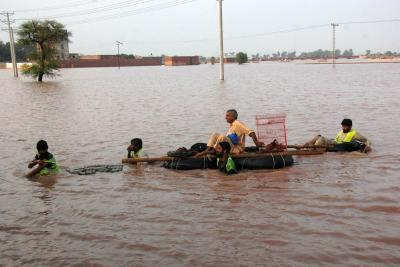Heavy rains continue to hit Pakistan, causing devastating floods and loss of lives. Over the past 24 hours, at least 21 people have lost their lives due to rain-related incidents, according to the National Disaster Management Authority (NDMA).
Most of the deaths—eight in total—occurred in eastern Punjab province. Many were caused by river floods and collapsing homes. In the northwest, 13 people died in Buner district of Khyber Pakhtunkhwa during flash floods in August. Some of these victims went missing during the sudden floods and were later confirmed dead after verification.
Since the monsoon season started on June 26, the heavy rains and floods have caused widespread destruction across Pakistan. So far, at least 905 people have died, and 1,044 others have been injured. Thousands of homes have been damaged or destroyed, and over 6,180 cattle have lost their lives. Additionally, nearly 240 bridges and more than 670 kilometers of roads have been damaged.
Khyber Pakhtunkhwa and Punjab provinces have been hit the hardest. KP has reported 488 deaths and 360 injuries, while Punjab has seen 223 deaths and 648 injuries. Sindh, Gilgit-Baltistan, Azad Kashmir, Balochistan, and Islamabad also reported casualties, with deaths ranging from 9 to 58.
The Pakistan Meteorological Department (PMD) has issued warnings of further heavy rainfall and high flood levels in major rivers. The River Sutlej in Punjab remains at extremely dangerous levels, and a new flood wave in the Chenab River could reach “very high to exceptional” levels soon. The Indus River in Sindh is also expected to rise to dangerous levels by September 6 or 7. These rising waters threaten urban flooding in cities like Lahore, Gujranwala, Rawalpindi, and Islamabad.
Authorities have warned residents of possible flash floods, especially in low-lying areas, and potential landslides in hilly regions. In Punjab, floodwaters have submerged over 260 villages in Jhang and Muzaffargarh districts. The floods have also damaged numerous bridges and roads, affecting daily life and transportation.
Emergency teams remain on high alert as rescue and damage assessment efforts continue across the affected regions. Officials urge people to stay cautious and prepared for more rainfall and possible flooding signs.
Stay updated and stay safe as Pakistan faces one of its toughest monsoon seasons in years.



